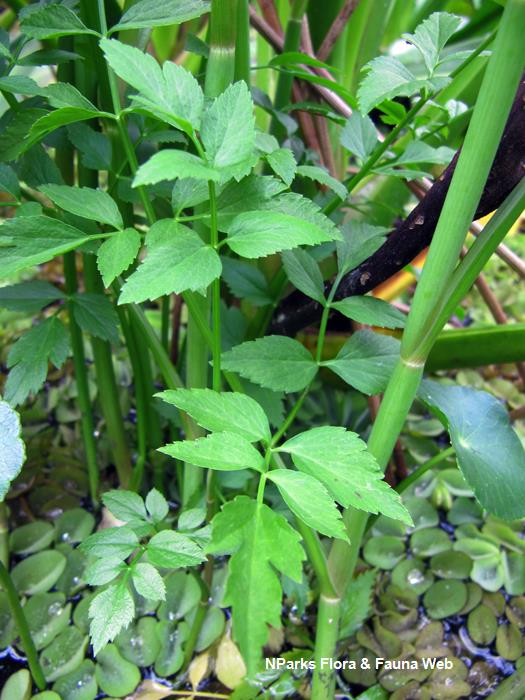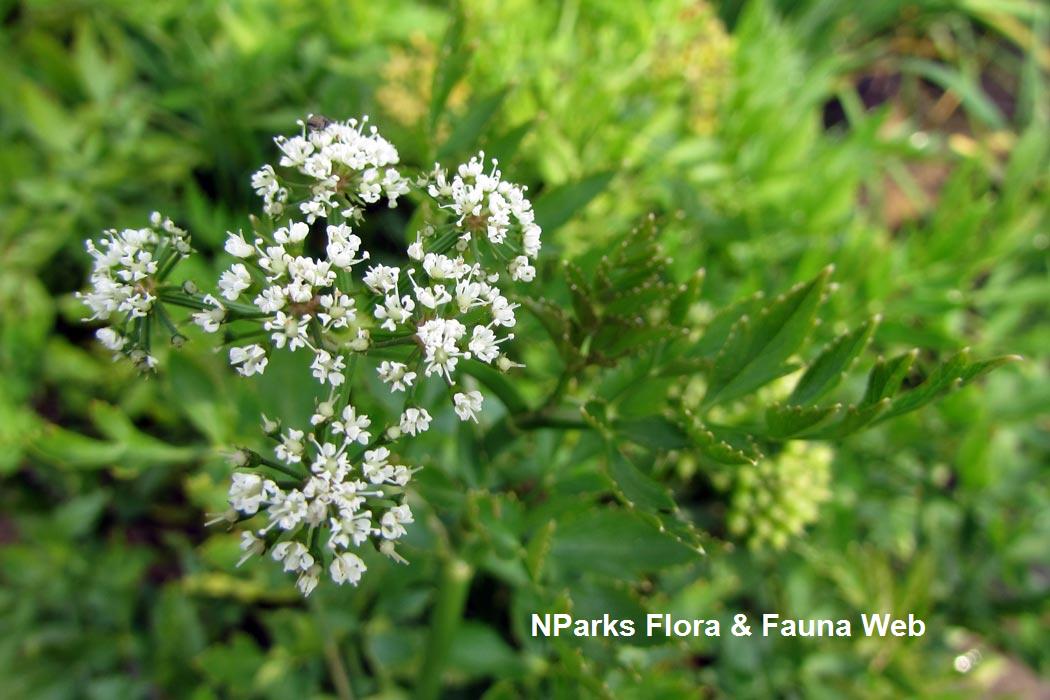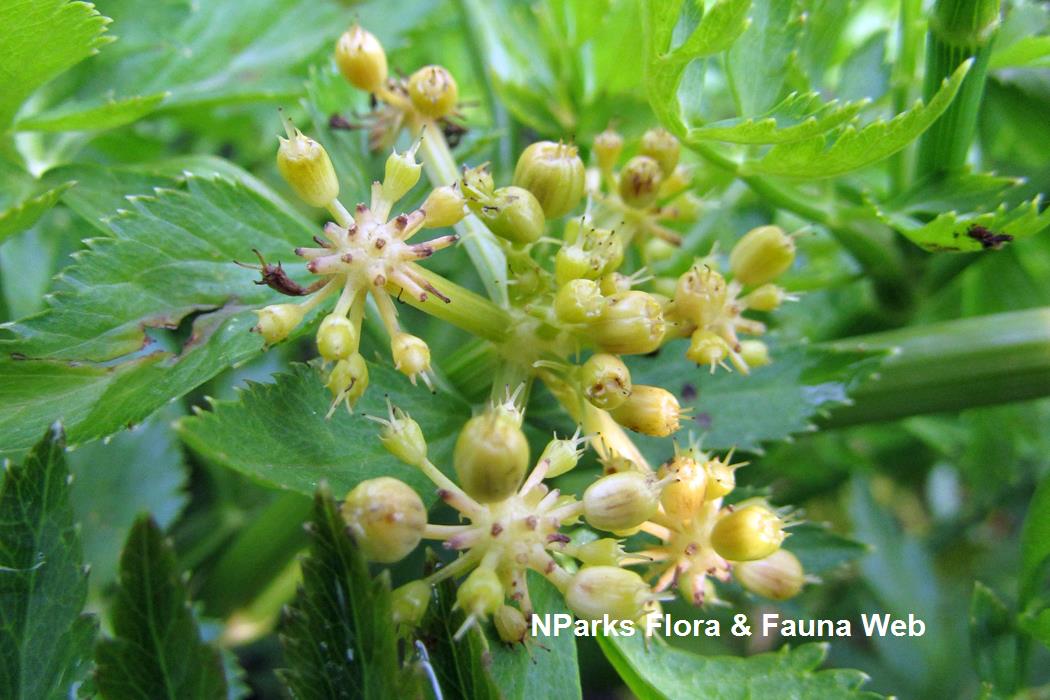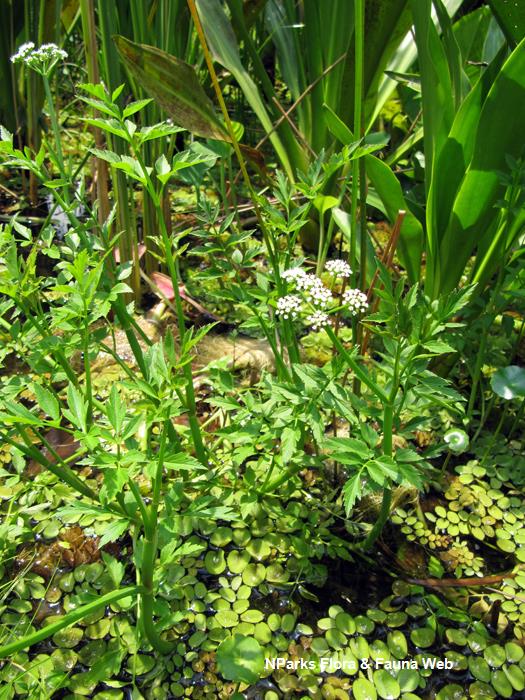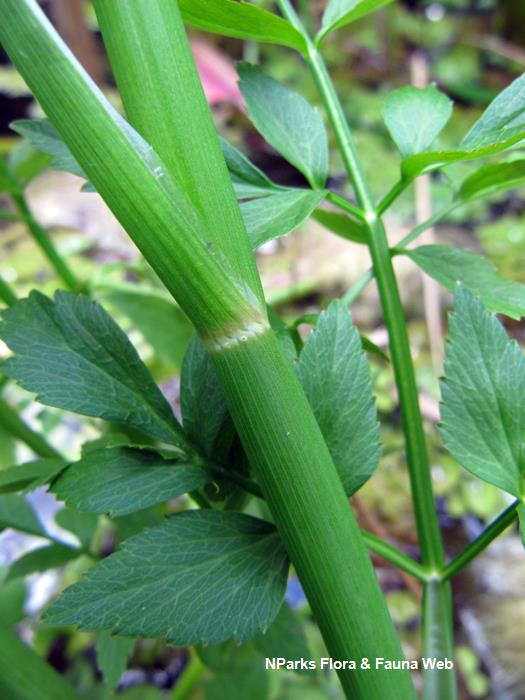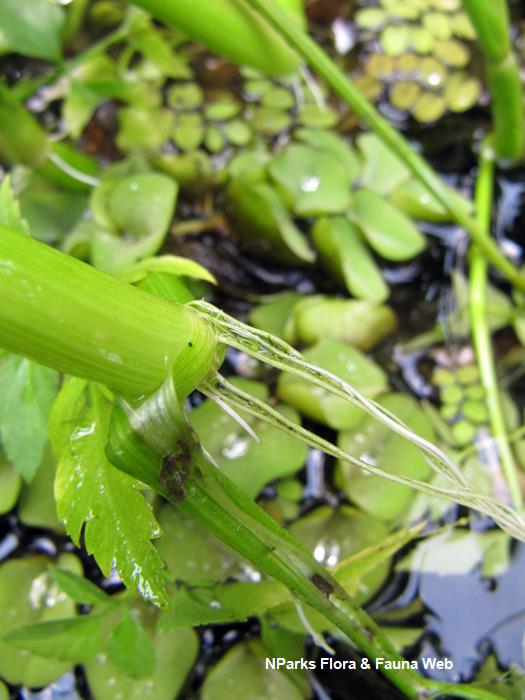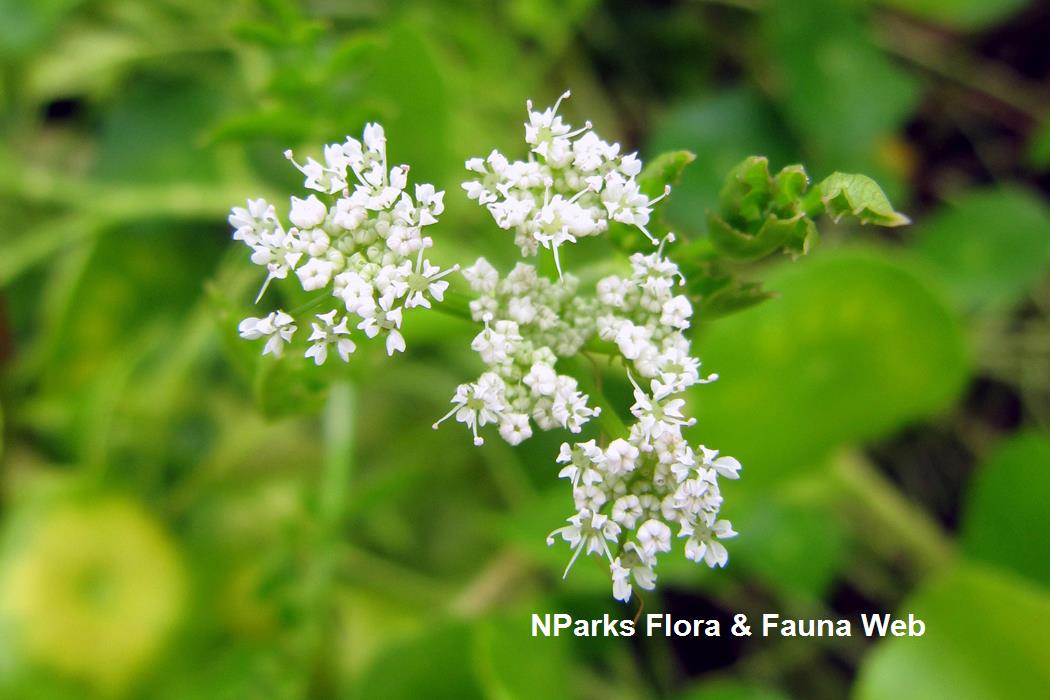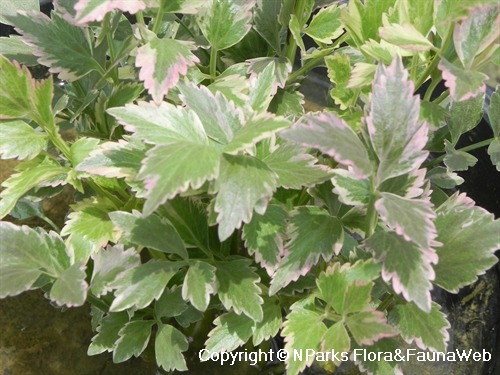
Back
Oenanthe javanica (Blume) DC.
| Family Name: | Apiaceae (Umbelliferae) |
| Synonyms: | Cyssopetalum javanicum (Blume) Turcz., Dasyloma javanicum (Blume) Miq., Falcaria javanica (Blume) DC., Sium javanicum Blume |
| Common Name: | Water Celery, Water Dropwort, Water Parsley, Selom |
Name
Classifications and Characteristics
| Plant Division | Angiosperms (Flowering Seed Plants) (Dicotyledon) |
|---|---|
| Plant Growth Form | Aquatic & Hydrophyte (Floating Aquatic, Waterside / Marginal), Herbaceous Plant |
Biogeography
| Native Distribution | Southeastern Siberia to Tropical and Subtropical Asia |
|---|
Description and Ethnobotany
| Growth Form | A perennial aquatic herbaceous plant that spreads with a creeping habit, spreading by stolons (= lateral stems growing horizontally at ground level, rooting at the nodes and producing new plants from its buds). The dimensions of the plant are very variable, with various forms having been described, all connected by intermediate forms. Red-leaved forms exist in the wild, which are easily confused with poisonous related species. |
|---|---|
| Foliage | Pinnate to tripinnate compound leaves are alternate on the stem with petioles up to 12 cm long, each sheathed over most of its length. Leaf blades are oblong to ovate in shape, margins serrate or entire. Dark green and dull above, the surface beneath is lighter-coloured beneath with transparent nerves. |
| Stems | Stems terete (= like a slender, tapering cylinder, more or less circular in any cross-section), erect or ascending from a creeping base. The centres of the stems are hollow, which aid the plant in floating in water. Sometimes tinged red, the stems are 10-100 cm long and much branched. |
| Flowers | Inflorescence a compound many-flowered umbel (= an inflorescence in which flower stalks arise from the same point on the inflorescence stalk), terminal and positioned opposite the leaves. Flowers small and white, said to give off a wine-like fragrance, which is sometimes undetectable. |
| Fruit | Fruit a schizocarp (= a dry indehiscent fruit, which splits into separate one-seeded segments at maturity). |
| Habitat | O. javanica occurs wild in swampy areas, along streams and in wet grasslands and clearings. It can be found across a wide altitudinal range from sea-level to an elevation of 2800 m. |
| Cultivation | Easy to grow and maintained throughout the year without replanting, O. javanica thrives in warm wet areas although it is a cool-season plant. Semi-shade conditions are also preferred. Some forms have frost-hardy roots and stolons.O. javanica are most commonly propagated from stem cuttings, which when rooted, go on to establish quickly when transplanted into moist soil. It may also be propagated from seed, although germination has been observed to be erratic. |
| Etymology | The genus name Oenanthe, is derived from the Greek oinos and anthos, which mean “wine” and “flower”, referring to the plant’s white flowers that have been described to have a wine-like fragrance. The specific epithet “javanica means “of Java” or “Javanese”, in reference to one of the places of origin of the species. |
| Ethnobotanical Uses | Edible Plant Parts : Edible Leaves, Edible Stems Food (Fruit or Vegetable): One of the most popular traditional vegetables in Southeast Asia, O. javanica has a long history of use as a leafy vegetable in East and Southeast Asia. Its use as food in China dates back to as early as 700 BC, while its cultivation in Japan dates back to at least 750 AD. When bruised, the plant is described as smelling like carrot leaves. Its leaves and young stems may be used raw or cooked briefly. It is also one of the most common greens in the highlands of Papua New Guinea, where it is eaten raw or steamed, usually with fish or meat. In Japan, the vegetable is finely-chopped and added to one-pot dishes, such as sukiyaki. It is also a substitute for the celery (Apium graveolens var. dulce). A minor vegetable in most Southeast Asian countries, Oenanthe javanica is either collected from the wild or cultivated on a small scale. In Singapore, it is less common, only occasionally available in the wet markets of Geylang Serai and the Thai supermarkets. Medicinal: The seed and other plant parts of O. javanica are known to be used medicinally. Others: O. javanica can be used as feed for fish, which are known to find the plant an attractive food, and small ruminants. Its seeds contain an essential oil, which is a good source of limonene, which is used in cosmetics and solvents. |
Landscaping Features
| Desirable Plant Features | Fragrant (Flowers) (Day) |
|---|---|
| Landscape Uses | Riverine, Aquarium / Aquascape, Container Planting |
| Thematic Landscaping | Water Garden |
Plant Care and Propagation
| Light Preference | Semi-Shade |
|---|---|
| Water Preference | Lots of Water |
| Plant Growth Rate | Fast to Moderate |
| Rootzone Tolerance | Waterlogged Soils (Drains Site) |
| Propagation Method | Seed, Stem Cutting |
Foliar
| Mature Foliage Colour(s) | Green |
|---|---|
| Foliar Type | Compound (Even-Pinnate, Bipinnate, Tripinnate) |
| Foliar Arrangement Along Stem | Alternate |
| Foliar Shape(s) | Non-Palm Foliage (Ovate, Oblong) |
| Foliar Margin | Entire, Serrate / Toothed |
Floral (Angiosperm)
| Flower Colour(s) | White |
|---|---|
| Inflorescence Type | Umbel |
Fruit, Seed and Spore
| Mature Fruit Colour(s) | Brown |
|---|---|
| Fruit Type | Dehiscent Dry Fruit |
Image Repository
Others
| Master ID | 30673 |
|---|---|
| Species ID | 4982 |
| Flora Disclaimer | The information in this website has been compiled from reliable sources, such as reference works on medicinal plants. It is not a substitute for medical advice or treatment and NParks does not purport to provide any medical advice. Readers should always consult his/her physician before using or consuming a plant for medicinal purposes. |



